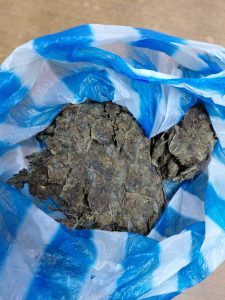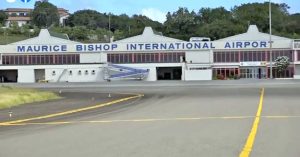By Sue-Ann Wayow
A GROUP of scientists has left Trinidad and Tobago to monitor the volcanic activity at La Soufriere in St Vincent and the Grenadines (SVG).
On Thursday, the SVG’s National Emergency Management Organisation (NEMO), in a press release stated that the group of scientists from the University of the West Indies (UWI) Seismic Research Centre at St Augustine is being led by geologist Professor Richard Robertson. They left on board the Regional Security System (RSS) Aircraft.
NEMO stated, “The scientists will do a fly over of the La Soufriere volcano for a first-hand view of activities there before landing at AIA (Argyle International Airport.”

NEMO is continuing to advise that no visits be made near the site until scientists advises it is safe to do so and that no evacuation order has been issued although the alert level remains at Orange. Persons living close to the volcano are asked to be more vigilant and to listen for all advisories from NEMO.
NEMO stated, “There has been no explosive eruption of the La Soufriere volcano overnight. La Soufriere continues to have effusive eruptions and magma continues to reach the surface at high temperatures. When the magma interacts with the surface temperature, especially at mornings when the air is cool, it appears as steam which can then be seen above the crater. Similar activities may continue for weeks or months.”

Since December 29, activities at the volcano that last erupted in 1979 have been more closely monitored as residents and citizens fear another eruption.
In its update on Thursday night at 8 pm, the UWI Seismic Research Centre stated that the three person team consisted of Robertson, instrumentation engineer Lloyd Lynch and engineering technician Ian Juman.
The Centre stated, “Two aerial reconnaissance were done today. The first was done by the group of scientists on board the Regional Security System (RSS) aircraft while en route to St. Vincent and the Grenadines for a first- hand view of activities at the La Soufriere Volcano before landing at the Argyle International Airport (AIA). However, heavy cloud cover prevented them from getting a good view of the crater.
“The second aerial reconnaissance was done at 4.00 pm and the photographer was able to capture photos of the crater, which show that the effusive eruption continues and the new dome also continues to increase in size.”
In a brief video posted by the centre on its Facebook page, Robertson explained a bit more about what was taking place at La Soufriere.
He said that an effusive eruption meant that there was a “ quiet emission of magma to the surface so it is erupting as it is now.”

Robertson said, “All volcanic eruptions are dangerous to some extent but the main danger from the effusive eruption in the context of (La) Soufriere because of where it is happening, it is in a confined crater and the main danger will be to the people who are perhaps going into the crater which they should not do, or on the summit of the volcano.”
That was the most dangerous area of the volcano because hot rock and gas were being emitted.
Robertson explained that with an explosive eruption, magma was also involved but there was more gas trapped in it.
“As it (magma) gets to the surface, it expands and the magma then explodes and instead of oozing quietly, it fragments and breaks up into little pieces and explodes up into the air pelting ash into the air or it collapses on the side. These things are usually hot, they get very far and it gets very dangerous as it goes further along.”

The professor added that it was very possible that there can be a switch from effusive eruption to explosive eruption hence the need to closely monitor the activity in the coming months and preparations were already being made for any further potential risk which includes a team remaining in St Vincent for a period and the establishment of new seismic stations.
In addition to the advice given by NEMO, Robertson is also advising that persons not vandalise the monitoring equipment that are being placed at the site.
Professor Richard Robertson explains more about the La Soufriere volcano:
![]()











